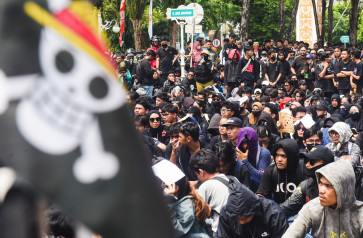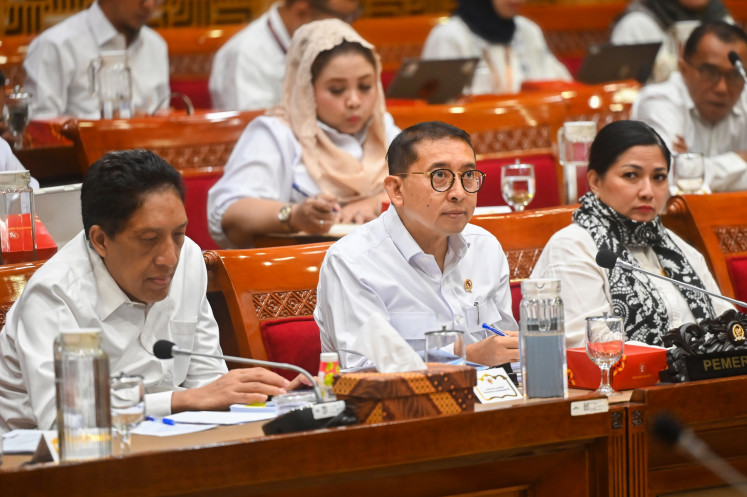Popular Reads
Top Results
Can't find what you're looking for?
View all search resultsPopular Reads
Top Results
Can't find what you're looking for?
View all search resultsGovt blames rain, not deforestation
Swept away: A rescuer inspects damage from a flash flood in Teluk Wondama, Papua, on Sunday
Change text size
Gift Premium Articles
to Anyone
S
span class="caption">Swept away: A rescuer inspects damage from a flash flood in Teluk Wondama, Papua, on Sunday. Floods caused by days of torrential downpours severely damaged thousands of buildings, roads and bridges in the remote province, leaving more than a hundred dead and dozens more missing. AP
The government denied on Monday that the fatal flood in Wasior, West Papua, was caused by illegal logging, saying there was no evidence of such activity nearby.
“Some locals had cut down trees, but it was on a very small scale,” Coordinating Public Welfare Minister Agung Laksono said after a Cabinet meeting chaired by President Susilo Bambang Yudhoyono.
“The [Meteorology, Climatology and Geophysics Agency] had earlier predicted heavy rains, and that’s what happened and caused the flood,” Agung said.
Loose soil and heavy rains had combined to displace entire trees along with their roots during the flood, he added.
Environmentalists had accused the government of natural resources mismanagement in the province, saying that Jakarta had issued licenses for massive forest conversions that eventually led to last week’s flash flood.
Forestry Minister Zulkifli Hasan said last week that the ministry had issued licenses for logging companies, but for operations that were far from Wasior and the flood site.
Zulkifli initially blamed the flood on illegal logging, which he alleged was “rampant in West Papua”. On Monday, however, he said that illegal logging was not to blame. Wasior was supposedly a conservation area that suffered from settlement encroachment, among other things, he said.
Environment Minister Gusti Muhammad Hatta also said Wasior’s forests were in good condition.
Green Indonesian Institute chairman Chalid Muhammad criticized the government’s “denial” of the flood’s cause.
“The fact is there were many logs found in the flood zone in Wasior. If there was no logging, where did the logs come from? If the trees collapsed because of the flood, they would still have had roots or branches,” Chalid said.
Data from the institute shows that deforestation in West Papua exceeded 250,000 hectares a year from 2005 to 2009, which was equal to 25 percent of the country’s annual forest loss.
West Papua has more than 5 million hectares of primary forests and 1.4 million hectares of secondary forests that are under threat from conversions.
A geologist from Yogyakarta’s Gadjah Mada University, Dwikorita Karnawati, said the area was surrounded by steep heights and prone to natural disaster. Dwikorita and a team from the university are scheduled to visit the site this week.
A flash flood struck Wasior in Wondama Bay regency on Oct. 4. As of Monday, the death toll was 145 and 103 were reported missing. More than a thousand residents fled their homes while dozens were still hospitalized.
Agung said relief efforts for the victims would continue until Oct. 18.
He said the President had ordered that rehabilitation and reconstruction start as soon as the relief operation finished.
Yudhoyono ordered the National Disaster Mitigation Agency to quickly finalize rehabilitation and reconstruction plans.
“The President himself will visit the site on Wednesday to check that relief efforts are running well in advance of the rehabilitation and reconstruction efforts,” Agung said.
Slamet Susanto contributed to the story from Yogyakarta.










